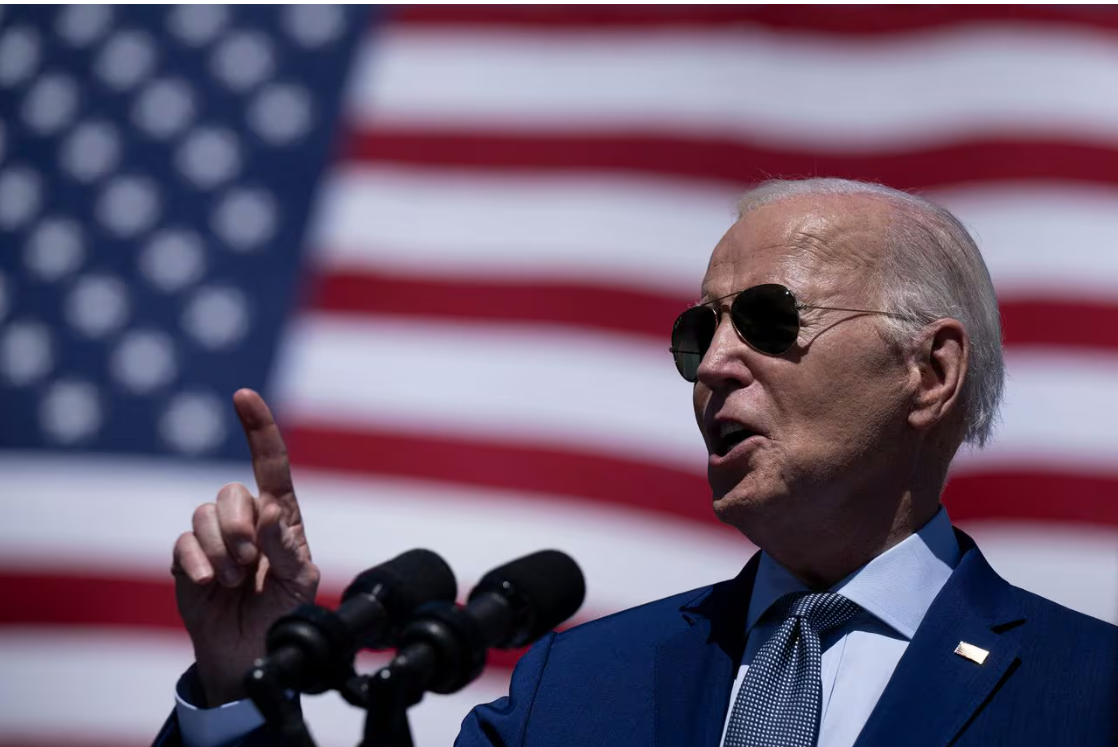拜登建议联邦政府在降低住房成本方面发挥更大作用

【中美创新时报2024年3月22日讯】(记者温友平编译)拜登最近几周重点关注住房问题,部分原因是为了向选民表明,他正在努力降低每月的主要成本之一。《纽约时报》记者吉姆·坦克斯利(Jim Tankersley)和康纳·多尔蒂(Conor Dougherty)对此作了下述报道。
拜登政府的经济学家呼吁采取更积极的联邦行动,降低购房者和租房者的成本,以应对拜登总统竞选连任时面临的最大经济挑战之一。
周四发布的白宫报告中的政策建议包括联邦可能对地方政治进行积极干预,这通常决定了房屋的建造地点以及谁可以居住。政府正在支持一项计划,向城市和其他地区施压,要求其放宽分区限制,这些限制在许多情况下阻碍了经济适用房的建设。
这一建议是新政府深入研究数十年来形成的住房危机的一部分,这场危机阻碍了总统连任的机会。这些提案包含在总统年度经济报告中,如果拜登赢得第二个任期,可以作为重大住房推动的蓝图。
该报告包括一系列旨在降低租房或购房成本的举措,同时鼓励地方政府修改分区法,以允许开发更多经济适用房。
白宫经济顾问委员会主席贾里德·伯恩斯坦在接受采访时表示:“如果不解决土地使用法规,就很难在这个领域、在这个经济适用房领域做出改变。”
伯恩斯坦补充说,政府官员相信许多地方领导人正在鼓励联邦政府在分区改革中发挥更大的作用,这有助于克服当地反对开发团体的反对意见。 “我觉得我们现在比以往任何时候都更加敞开大门,”他说。
该报告充满了统计数据,说明了为什么住房已成为美国家庭的严重压力来源和拜登的选举负担。
政府承认,它对当地分区规则的权力有限,这些规则往往决定特定社区的房屋设计和密度。 总统关于扩大供应的大部分建议都涉及利用联邦预算作为诱饵,鼓励地方政府允许更多的建设,包括增加低收入住房和较小的新房。
由于选举即将到来且共和党控制众议院,此类政策不太可能在今年成为法律。
但如果拜登赢得连任,对住房的关注以及对一系列旨在增加住房供应和负担能力的全面政策的认可,可能会成为两党在这一问题上可能共同努力的蓝图。 它还可能为全国各州立法机构正在进行的住房改革运动增添动力。
该报告记录了过去十年中美国家庭的房价增长速度如何显着超过工资增长速度。 这使得中等收入购房者无法拥有房产,并使低收入租房者处于贫困边缘。
四分之一的租户(约 1200 万个家庭)现在将其收入的一半以上用于租金。物价如此之高,以至于如果一名最低工资员工每周工作 45 小时,持续一个月,中位租金将耗尽他或她赚到的每一美元。
报告称,这一切的背后是长期的住房短缺。住房短缺问题已成为民主党和共和党立法者罕见的共识点。
这种短缺是几十年来未能建造足够住房的结果,这种趋势在 2008 年金融危机后进一步恶化。 建筑成本不断上升,加上许多地方分区和土地使用规则使住房建设变得更加困难和昂贵,加剧了这种情况。这些规则还限制了哪些类型的单元可以建在哪里,例如规定在单户住宅区建造公寓属于非法行为。
缺乏经济适用房对低收入家庭和刚刚起步的夫妇尤其造成伤害。 在过去的十年里,数以百万计的低成本公寓基本上消失了,要么是因为租金上涨,要么是年久失修。 与此同时,规模较小、成本较低的“入门住宅”的市场份额正在不断缩小。
在过去的几年里,红州和蓝州的两党立法者团体推动了数十项州法律,以限制城市对发展的控制。 报告为他们欢呼,并指出政府为鼓励此类改革所做的努力,包括两年前发布的住房供应行动计划。
拜登最近几周重点关注住房问题,部分原因是为了向选民表明,他正在努力降低每月的主要成本之一。 私下里,他的助手们表示,希望美联储今年的降息能够压低抵押贷款利率,如果有新的住房供应进入市场,房价也可能会下降。
在公开场合,拜登抓住了这一倡议,呼吁立法者通过对住房供应和购房者税收抵免的大规模联邦投资。
拜登周二在拉斯维加斯表示:“如果通胀持续下降——预计会下降——抵押贷款利率也会下降,但我不会等待。” “我不会等的。”
本文最初发表于《纽约时报》。
题图:拜登最近几周重点关注住房问题,部分原因是为了向选民表明,他正在努力降低每月的主要成本之一。BRENDAN SMIALOWSKI/AFP VIA GETTY IMAGES
附原英文报道:
Biden suggests a bigger federal role to reduce housing costs
By Jim Tankersley and Conor Dougherty New York Times,Updated March 21, 2024
Biden has focused heavily on housing in recent weeks, in part to show voters he is fighting to lower one of their major monthly costs.BRENDAN SMIALOWSKI/AFP VIA GETTY IMAGES
Economists in the Biden administration are calling for more aggressive federal action to drive down costs for homebuyers and renters, taking aim at one of the biggest economic challenges facing President Biden as he runs for reelection.
The policy proposals in a White House report released Thursday include what could be an aggressive federal intervention in local politics, which often dictates where homes are built and who can occupy them. The administration is backing a plan to pressure cities and other localities to relax zoning restrictions that, in many cases, hinder affordable housing construction.
That recommendation is part of a new administration deep dive into a housing crisis, decades in the making, that is hindering the president’s chances for a second term. The proposals, included in the annual Economic Report of the President, could serve as a blueprint for a major housing push if Biden wins a second term.
The report includes a suite of moves meant to reduce the cost of renting or buying a home while encouraging local governments to change zoning laws to allow development of more affordable housing.
“It’s really hard to make a difference in this space, in this affordable housing space, without tackling land use regulations,” Jared Bernstein, the chair of the White House Council of Economic Advisers, said in an interview.
Bernstein added that administration officials believed many local leaders were encouraging a bigger federal role in zoning reform — which can help override objections from local groups that oppose development. “I feel like we’re kicking through more of an open door now than we ever have before,” he said.
The report is full of statistics illustrating why housing has become an acute source of stress for American families and an electoral liability for Biden.
The administration has acknowledged that it has limited power over local zoning rules, which tend to dictate the design and density of homes in particular neighborhoods. Most of the president’s recommendations for expanding supply involve using the federal budget as a carrot to encourage local governments to allow more building — including adding low-income housing and smaller starter homes.
Such policies are unlikely to be put into law this year, with an election ahead and Republicans in control of the House.
But the focus on housing and the endorsement of a comprehensive set of policies to increase its supply and affordability could serve as a blueprint for a potentially bipartisan effort on the issue if Biden wins reelection. It could also add momentum to a housing reform movement that is well underway in state legislatures around the country.
The report documents how, over the past decade, home prices have significantly outpaced wage growth for American families. That has pushed ownership out of reach for middle-income home shoppers and left lower-income renters on the brink of poverty.
A quarter of tenants — about 12 million households — now spend more than half their income on rent. Prices are so high that if a minimum-wage employee worked 45 hours a week for a month, a median rent would consume every dollar he or she made.
Behind all this, the report said, is a long-standing housing shortage. The lack of housing has become a rare point of agreement among Democratic and Republican lawmakers.
The shortage is the product of decades of failing to build enough homes, a trend that worsened after the 2008 financial crisis. It has been exacerbated by the rising cost of construction along with the many local zoning and land use rules that make housing harder and more expensive to build. These rules also limit what kinds of units can go where, for instance by making it illegal to build apartments in single-family neighborhoods.
The lack of affordable housing particularly hurts lower-income families and couples starting out. Millions of lower-cost apartments have essentially disappeared over the past decade, either through rising rents or by falling into disrepair. At the same time, smaller and lower-cost “starter homes” are a shrinking share of the market.
Over the past several years, a bipartisan group of legislators in both red and blue states have pushed dozens of state laws to limit cities’ control over development. The report cheered them and noted the administration’s efforts to encourage such reforms, including the Housing Supply Action Plan, which was released two years ago.
Biden has focused heavily on housing in recent weeks, in part to show voters he is fighting to lower one of their major monthly costs. Privately, his aides have expressed hope that Federal Reserve interest rate cuts this year will drive down mortgage rates and possibly home prices if a new supply of homes hits the market in response.
Publicly, Biden has seized on the initiative, calling on lawmakers to pass big federal investments in housing supply and tax credits for people buying homes.
“If inflation keeps coming down — and it’s predicted to do that — mortgage rates are going to come down as well, but I’m not going to wait,” Biden said Tuesday in Las Vegas. “I’m not going to wait.”
This article originally appeared in The New York Times.

